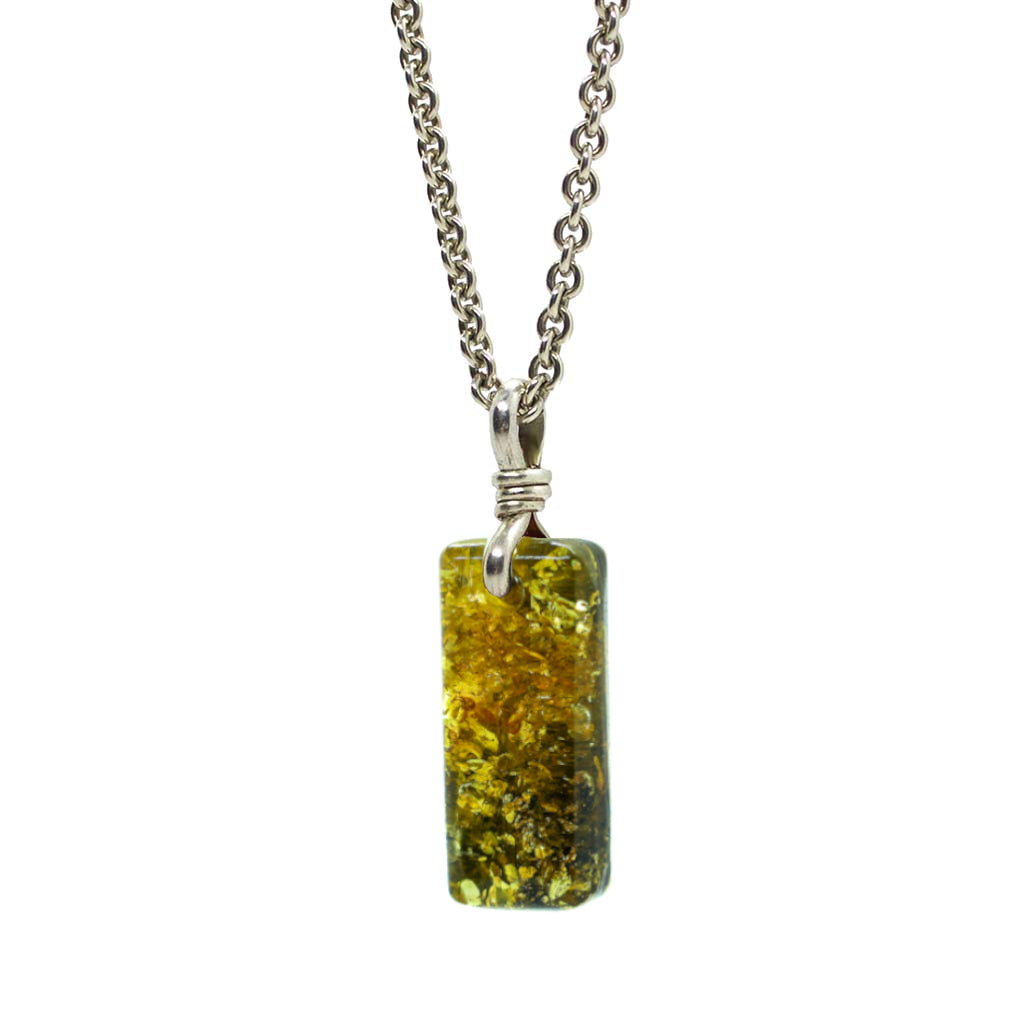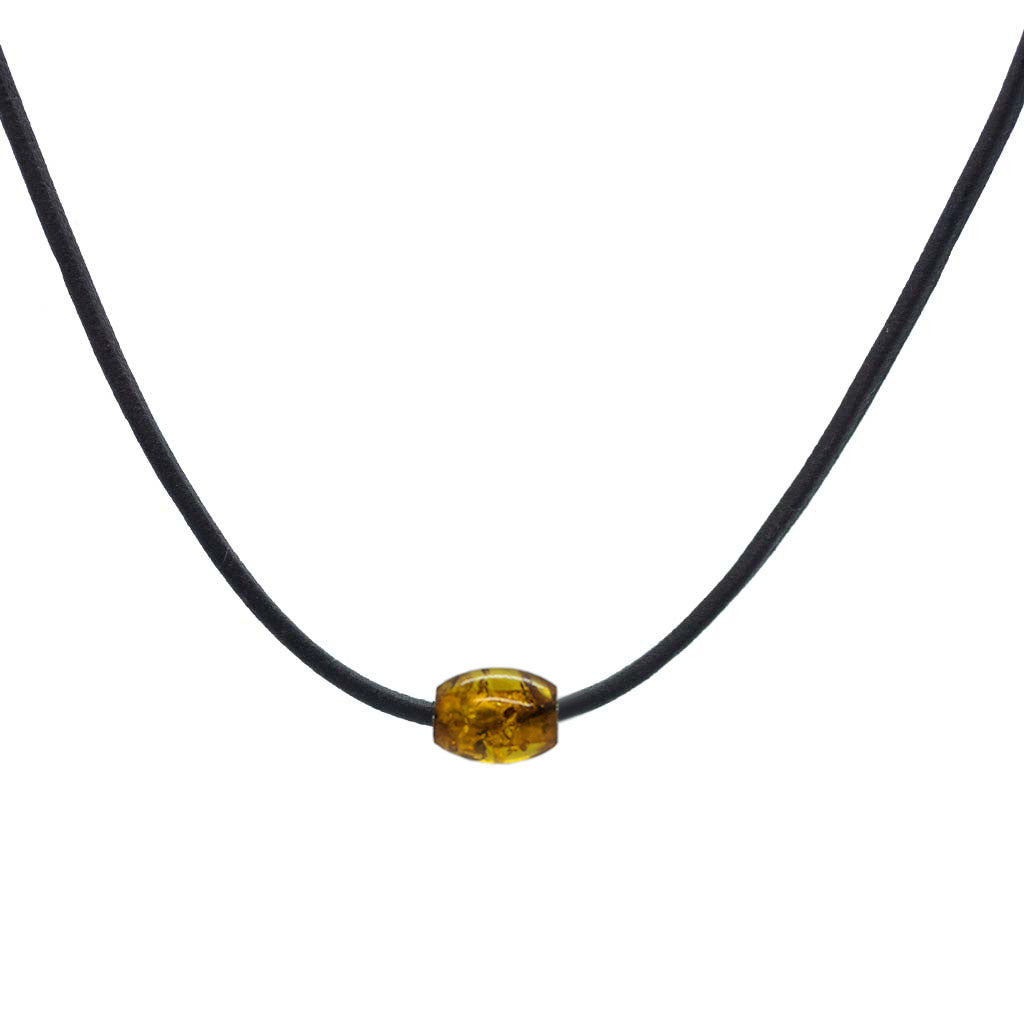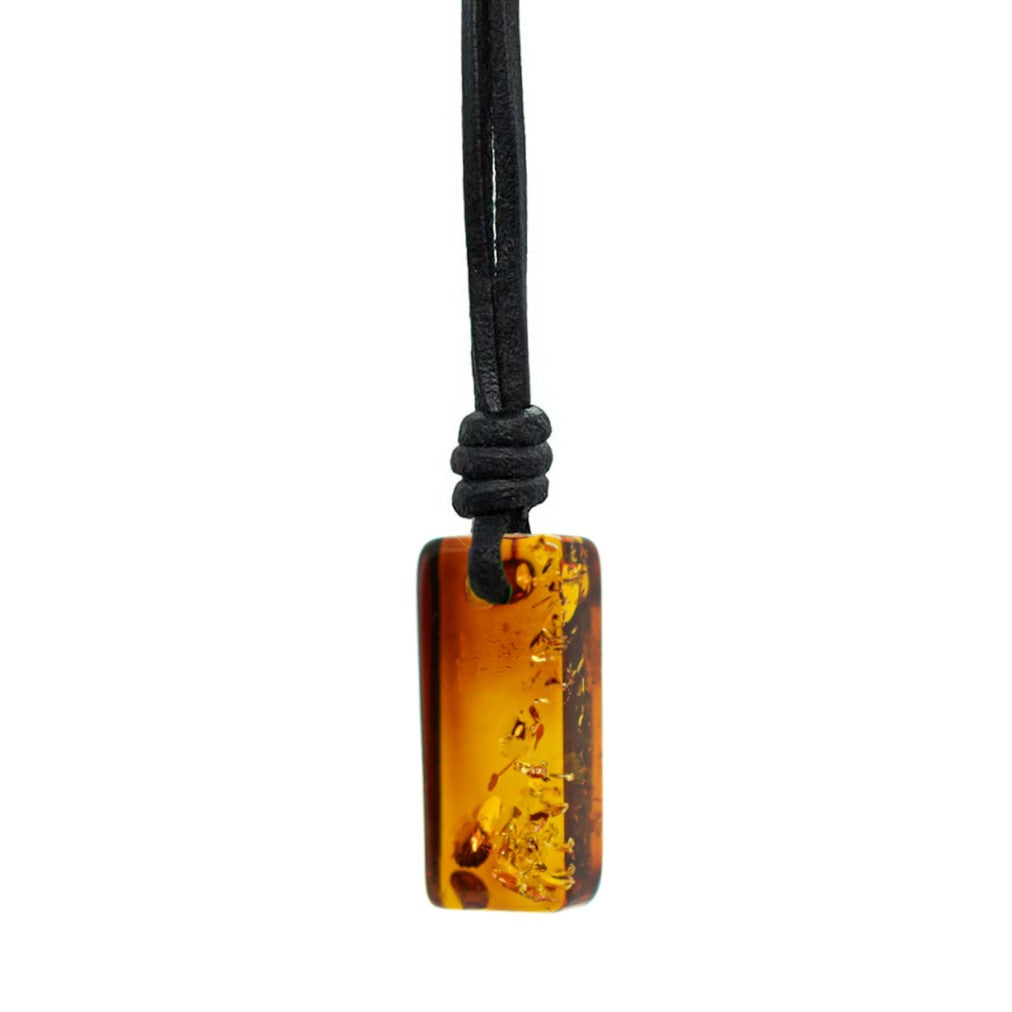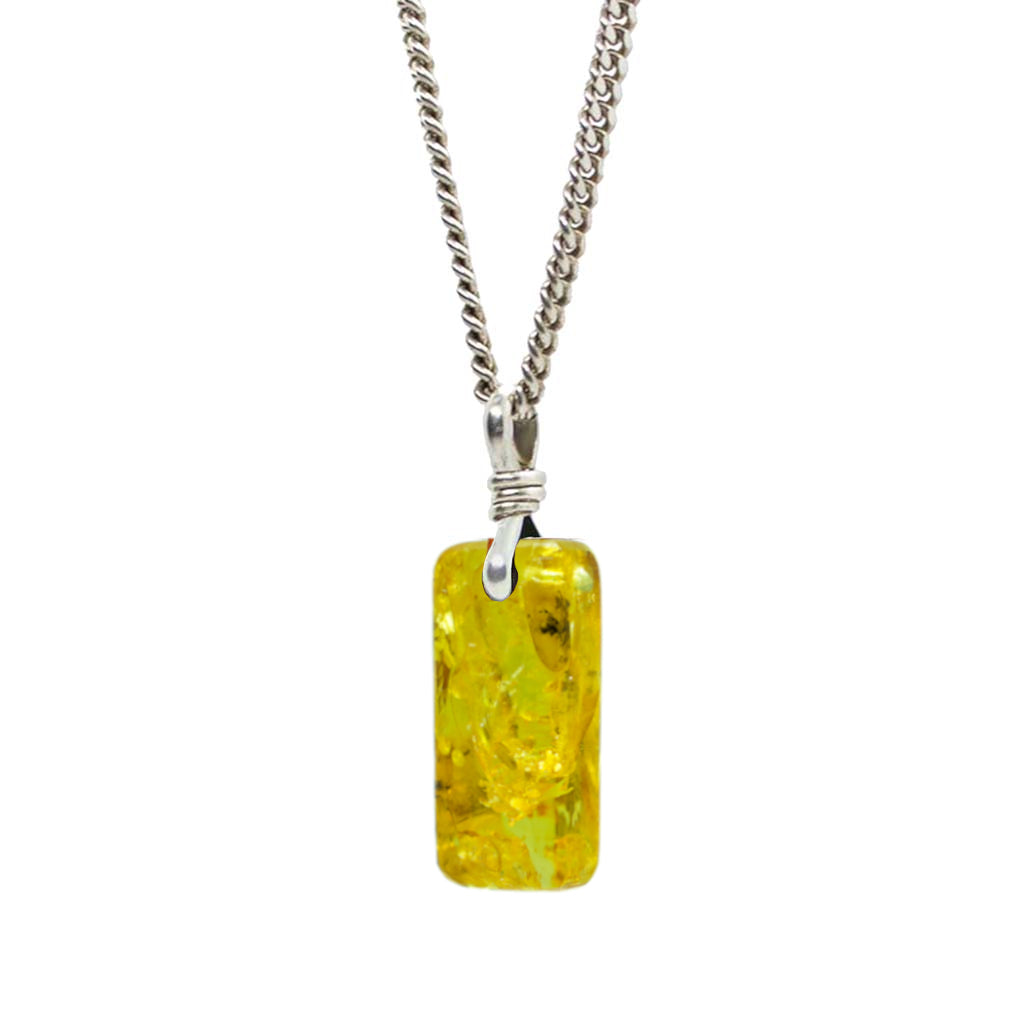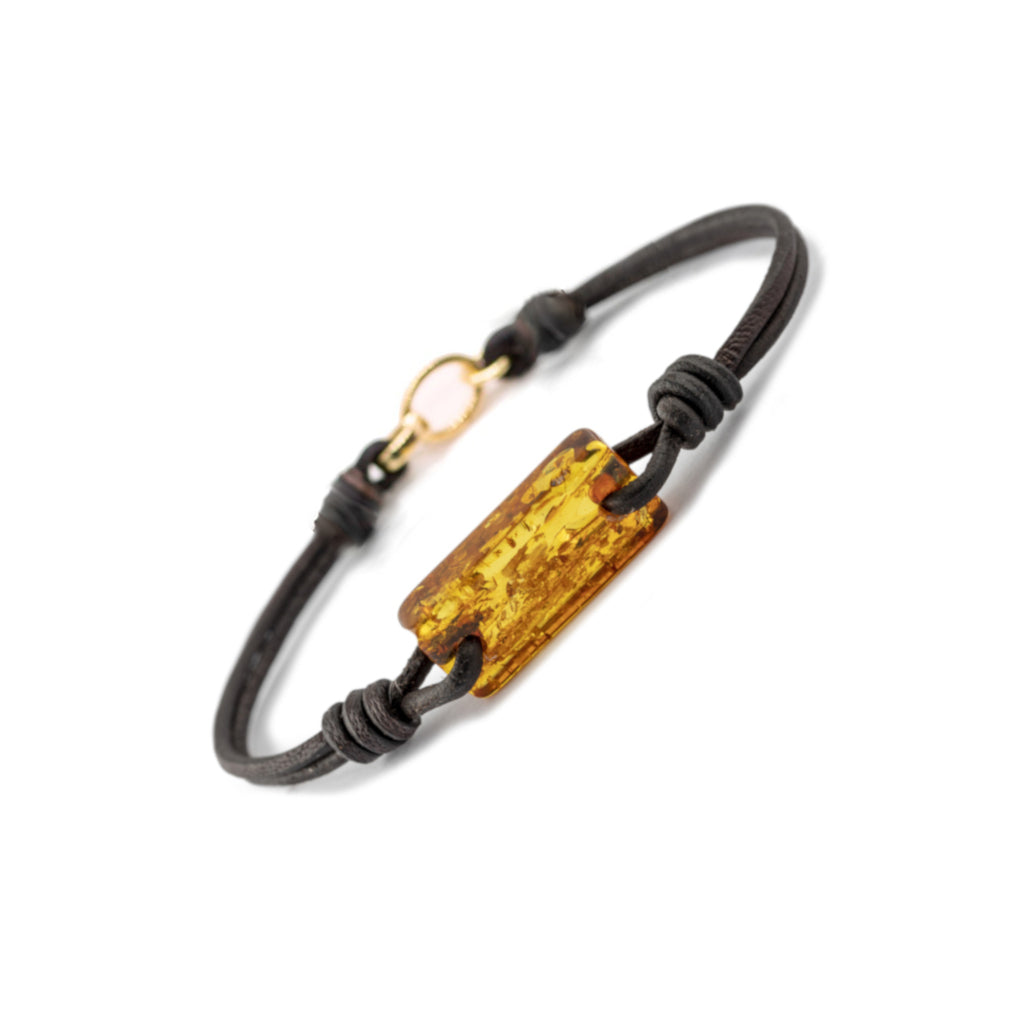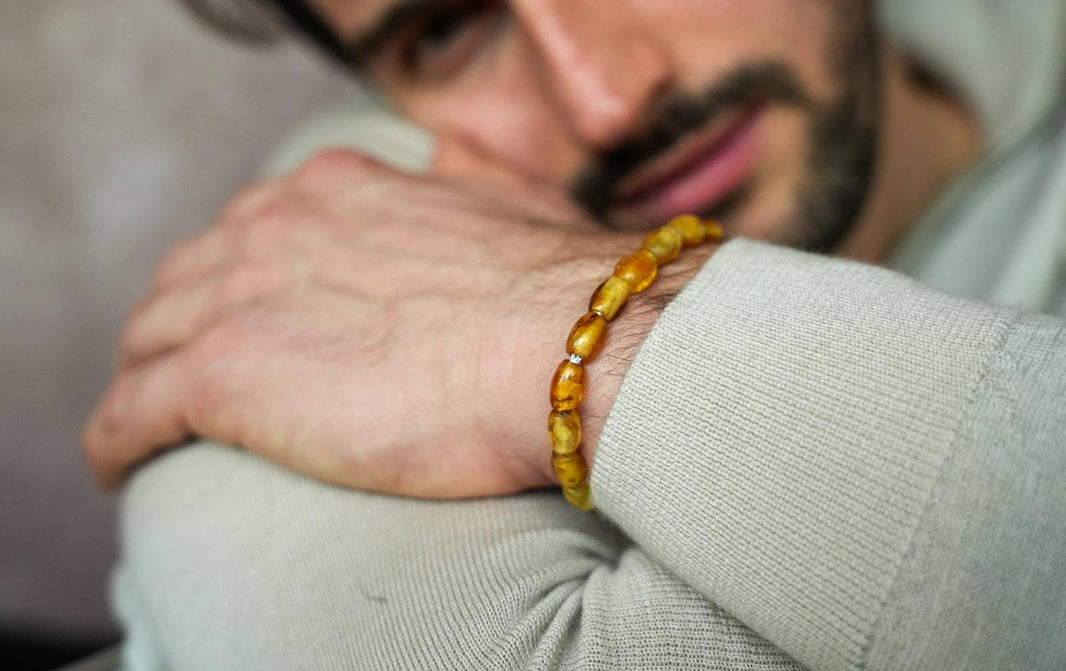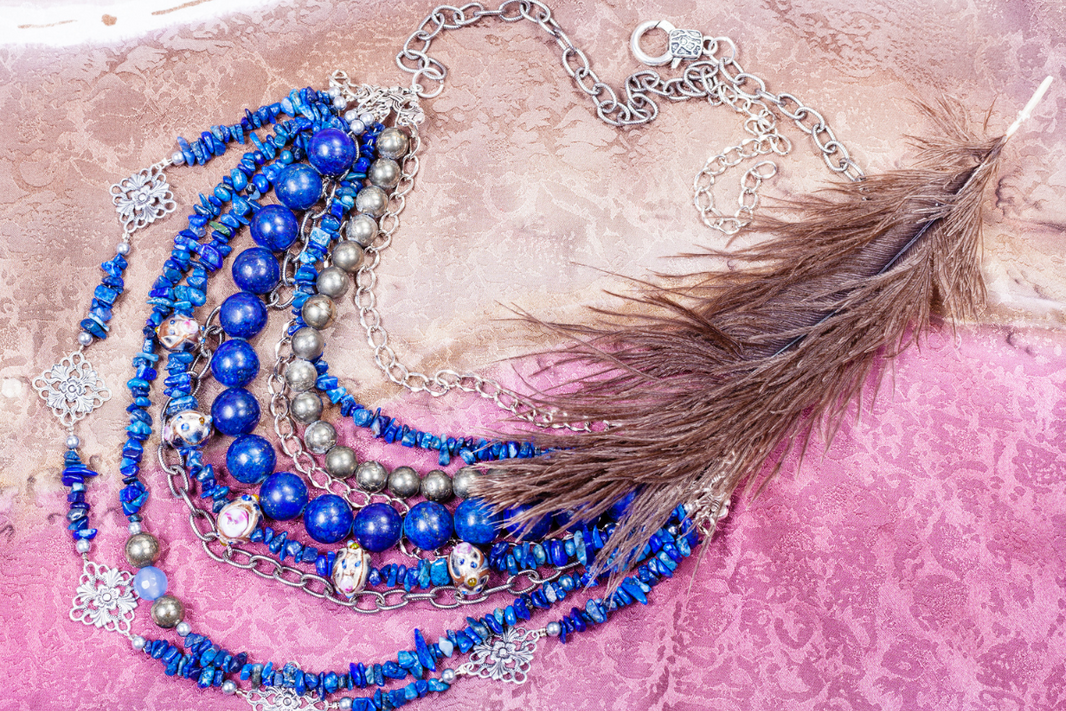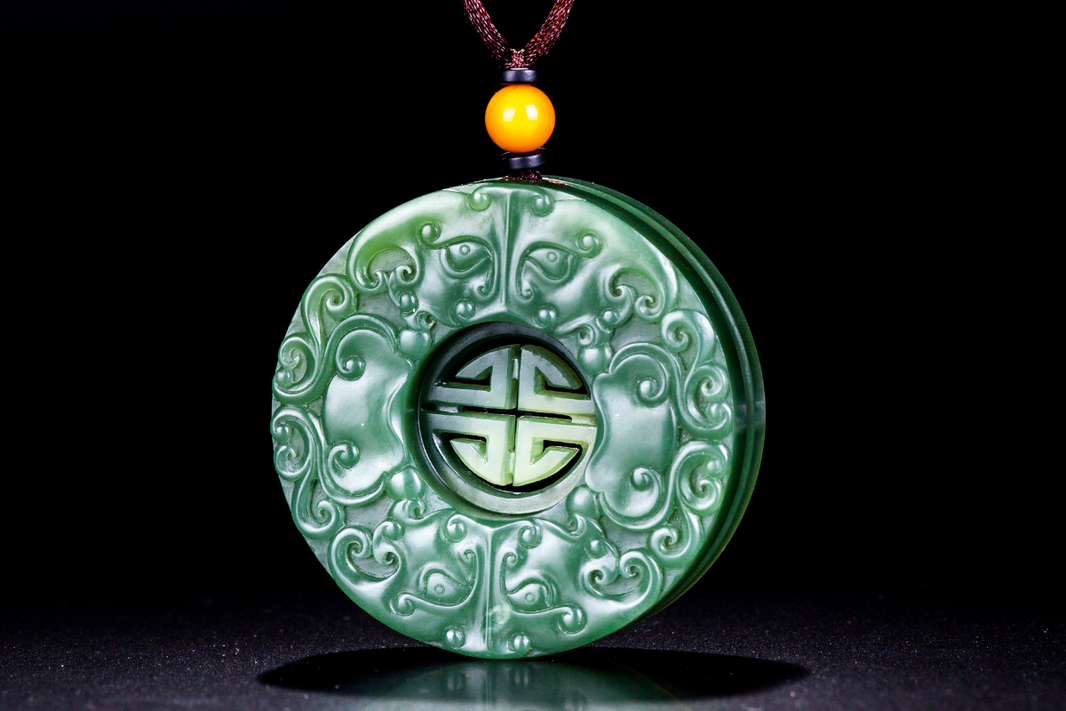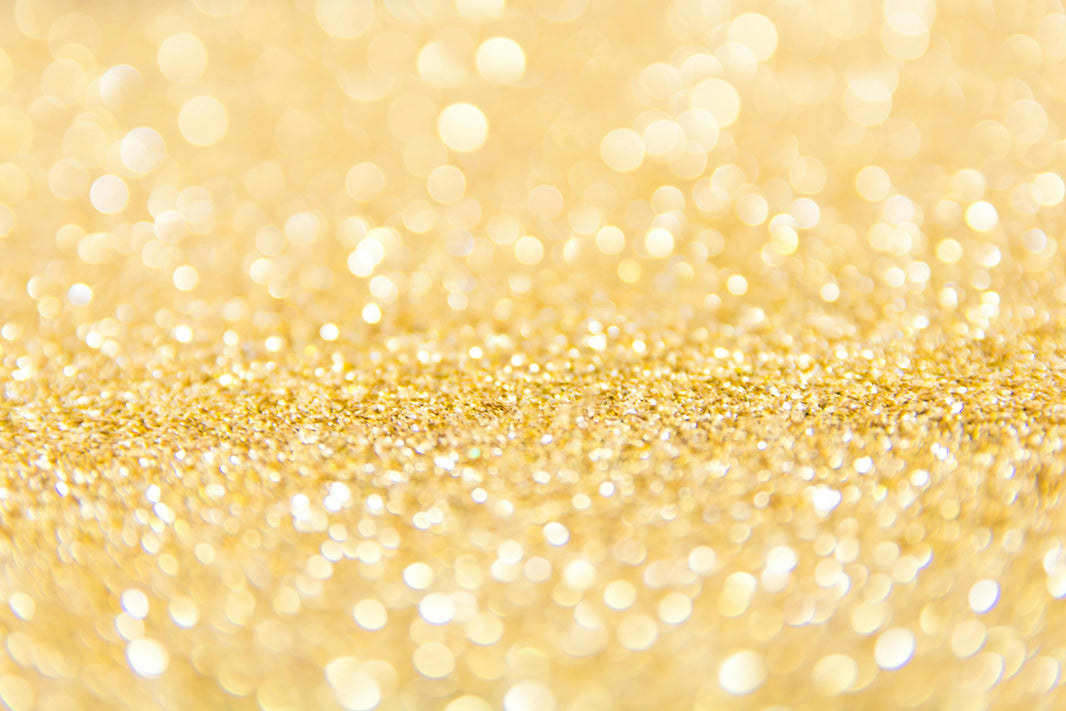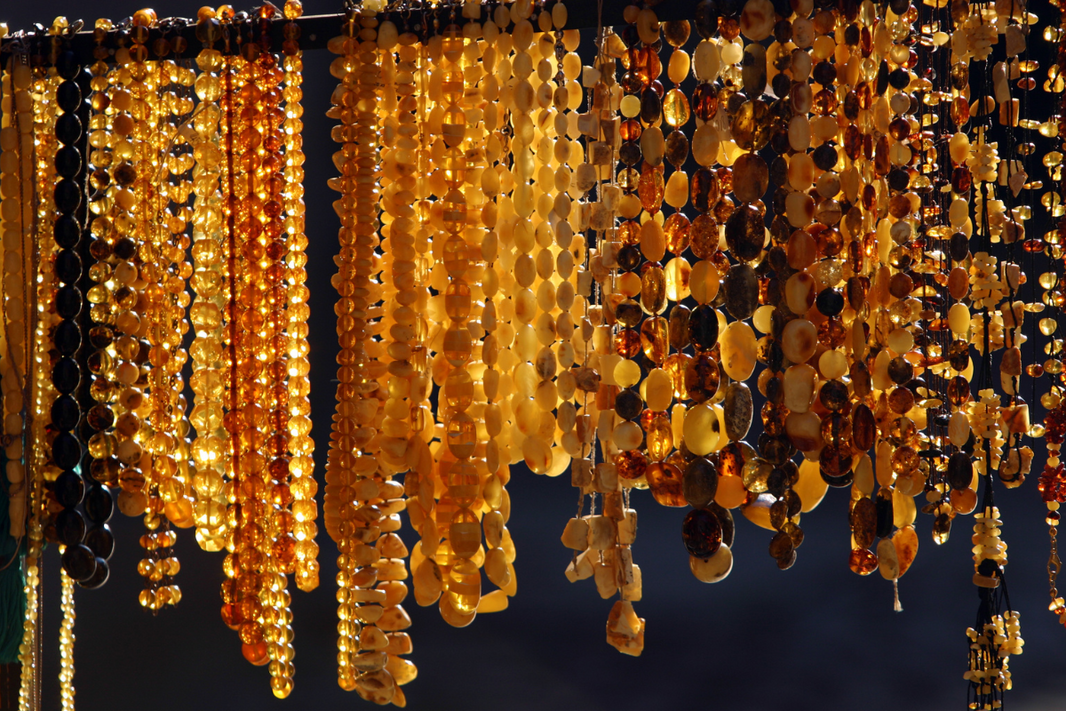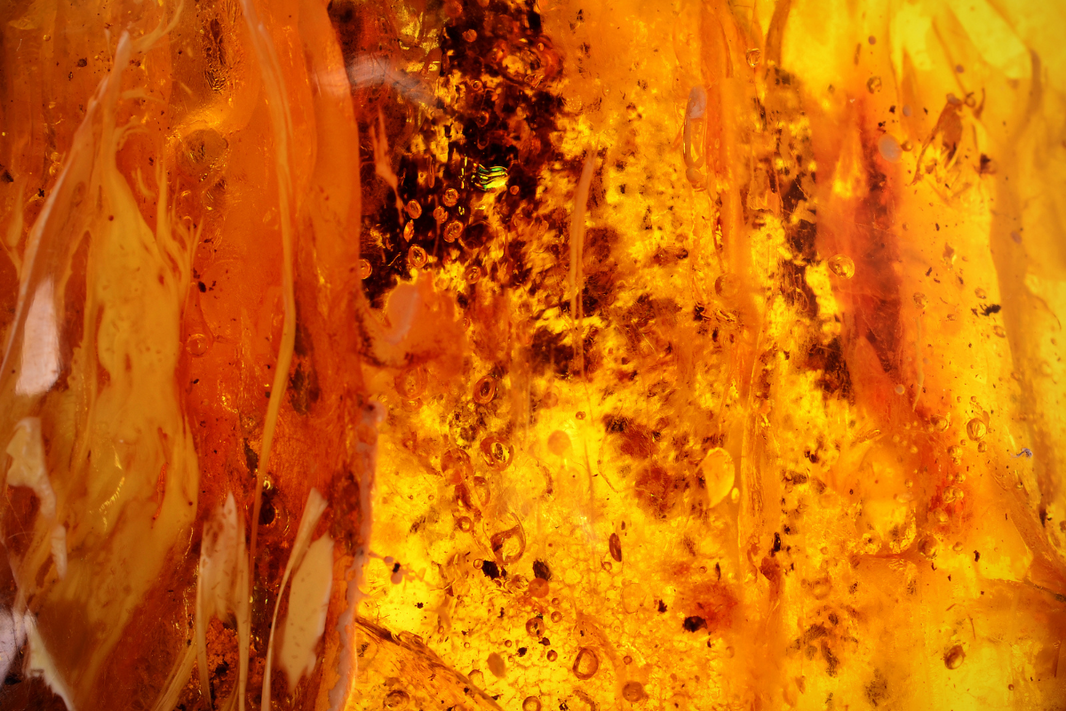At Atlas, we have a fascination and deep connection with organic gems – their earthy grounding, variety of colours, and their gentle aligning influence. Amber is one of our favourite stones here at Atlas Accessories; you’ll find many different shades of it featured in our Aeon, Amulet and Trinity collections.
When we were deciding on a stone to initially launch our designs with, Amber was a natural choice for us: both our founders have a personal affinity for Baltic Amber. Co-founder Dagna comes from Poland, an area famed for its Baltic Amber reserves, and tells us “every Polish grandma tells you to wear Amber when you are sick”.
Coincidentally, our Founder Gregory also made his first Aeon bracelet using Baltic Amber. His significant other was Polish, so he bought a piece of Amber in Warsaw and then eventually matched that with American Bison, to represent his American half and his partner’s Polish half. The idea came from when he and his partner together put a lock on a bridge in Poland in a well-known love tradition.
Design-wise, we also love the subtle lustre of Amber, and the way it has more interesting details inside as you look closer. It reflected our belief in connection to nature and the earth. It’s a perfect entry point for those looking to learn more about stones and their properties.
What Is Amber?
Amber is the fossilized resin from ancient forests. Amber is not produced from tree sap, but rather from plant resin. This aromatic resin can drip from and ooze down trees, as well as fill internal fissures, trapping debris such as seeds, leaves, feathers and insects.
The resin becomes buried and fossilized through a natural polymerization of the original organic compounds. Most Amber is extracted from the sea by various methods but some are found underground in areas that used to be waterlogged.
The highest concentration of quality Amber is found in the Baltic region of Europe, but it can also be found in further-flung places like Mexico, Sumatra and the Dominican Republic which is famous for blue amber
The oldest amber discovered on Earth is about 320 million years old. The Baltic Amber we use at Atlas is between 44 and 100 million years old.
Does Amber Have Healing Properties?
We believe so. Amber is widely believed to have certain healing properties, and has been used in natural medicine since ancient times in a variety of cultures.
Baltic Amber in particular is thought of as a great healer, cleanser and transformer. It contains high levels of a substance called succinic acid - considered a natural anti-inflammatory substance. Research has shown that this stone contains many valuable micronutrients: silicon, magnesium, iron, calcium, potassium, organic compounds combined with iodine, volatile substances and resin acids.
By absorbing negative or stagnant energy, Amber is believed to align body, mind and spirit to stimulate the body’s natural healing abilities. In recent times, Amber has become especially popular for the treatment of teething pain in babies. Whilst these healing claims are yet to be confirmed by modern science, there are a great deal of positive anecdotes out there.
How Can I Tell If It Is Genuine Baltic Amber?
Atlas Accessories only uses raw amber sourced from Poland in its original state that has not been heated, treated or altered in any way.
It depends on your beliefs. We feel that mass production changes the energy of the stone and the heating process, so we take great care in preparing our Amber for the Atlas range. It’s like hothouse tomatoes and fruits grown with pesticides; they look like normal veg, but don’t seem to have that powerful, alive taste.
Some sellers will try to mimic real Amber with plastic or resin material. These are fairly easy to spot via their abnormally low prices, several identical items, perfectly transparent stones and inclusions like insects, scorpions etc - this is very rare in real amber.
However, it is difficult for the casual observer to tell the difference between different types of Amber at first glance. It is harder than other resins, but the only way to know for certain is by professionally testing the structure of the piece. For the consumer, the price point is another indication of the quality of the product.

What About the Different Colours of Amber - How Are They Formed?
We carry lots of information on the different colours of amber we carry on our Organic Gemstones page. Each piece of amber displays a cascade of different lights and refractions, and no two pieces are ever the same.
The lightness of these stones depends on the concentration of naturally occurring gas bubbles in the resin. Honey Amber has the smallest concentration while dark brown Amber has the highest. All real Ambers will vary in colour due to the concentration of gas and other organic materials fossilised in the resin. There is even some amber that is milky white in colour.
The “green” Amber we use is technically a different form of yellow, and gets its hue from a higher concentration of solidified algae in the resin, similarly to how our black Amber is formed from soil and other dark coloured organic matter.
Green Baltic Amber accounts for about 2% of all naturally found Amber and gets its hue from having spent at least part of its long life in a marshy environment. In many cultures and throughout history, people have believed that green Amber has the power to bring good luck and immortality to its wearer.
Black Amber accounts for roughly 15% of all naturally found Amber but is surprising hard to source in its raw natural form. Held up to the sun, the true nature of this Amber is revealed in a deep cherry red colour that appears black to the naked eye, reminding us not to judge a book by its cover and that there is always another layer to things if you look hard enough.
Amber Through the Ages
As with any popular gemstone that has a long history of use in various cultures, Amber has accumulated its share of mystical properties. Amber was considered the "soul of the tiger" in Asian cultures and regarded as the stone of courage.
Vikings
Between 800 and 1,000 AD, Scandinavian Vikings would carve pieces of Amber into various animal shapes. Each carved piece was meant to contain the individual strengths of that animal species. They'd attach carved Amber bears to weaponry and armour, and keep personal Amber totems of animals whose strength was needed.
Homer’s Odyssey
Amber is also mentioned in Homer’s Odyssey, as an extravagant gift to Penelope from an eager suitor: “a golden necklace, richly wrought, and set with amber beads, that glowed as if with sunshine”. The poem was first published in the 8th century BC, proving how far back Amber’s significance really goes.
Chakras
The gold and orange shades of Amber are thought to stimulate the Navel or Sacral Chakra, whilst the yellow hues within Amber activate the Solar Plexus Chakra.
Gold or orange crystals are used to unblock the energy flow and restore one’s sense of balance, understanding and appreciation of life. Yellow crystals spiritually balance the Solar Plexus, freeing one to interpret the world through one’s own thoughts and emotions and not live in fear of violating the dictums of others.
The belief in Chakras stems from the early traditions of Hinduism.
The Mystery of the Amber Room:
Finally, one of the most famous uses of Amber is that of the Amber Room - literally decorated top to bottom in Amber - located in Catherine Palace in St Petersburg, which attracts many visitors every year.
The Amber Room you would visit today is actually a reconstruction; it was dismantled during the Nazi invasion of the Second World War. The Germans transported it to Königsberg (modern Kaliningrad), never to be seen again. The current location of the Amber Room is still unknown, although many theories have sprung up over the years based on findings of Amber vases or other suspected pieces of the décor.
How Do You Care for Amber?
As an organic gemstone, Amber can collect a light sheen of oils and dirt from everyday wear and touch. Simply use the polishing cloth we provide or any soft cloth and the friction created by rubbing and polishing the stone will remove the thin film of oil or dirt and bring back the shine.
Since all of our products are made never to be taken off, your Amber will get washed as you do in the shower as well but a good polish now and again helps keep the lustre.
Conclusion
Like flipping on a light switch, Amber transforms negative, stagnant energy into clear and positive energy. The light in Amber reminds us of the light within all of us and that sometimes we need to reconnect to that light and recharge.
Come explore the light and depth of our natural Baltic Amber pieces – a personal talisman for light, balance and radiance.

